

WillClift’s intuitive approach and mastery over materials has resulted in sculptures that carry their technical brilliance lightly. Cantilevered forms soar, rotate, glide and dip, residing in harmony with the environment, while also acting aas a counterpoint, or interruption. Although visually precarious, his structures balance by allying with, not against, gravity. Even so, a kind of magic exists in the illusion of gravitational defiance he is able to create. Clift’s forms, exhibited at Gerald Peters Contemporary, marks a pivotal moment in his career, celebrating a 20-year partnership between artist and gallery, and debuting works arising from a residency he undertook at Chậteau de la Napoule, France.
Clift became the recipient of the Prix Henry Clews in 2022-23. His residency year at Chậteau de la Napoule provided an opportunity to reflect on his practice as a mid-career sculptor, and experiment through the application of new techniques, tools and materials. With hardwood in short supply, he improvised using found objects, carbon fiber composite, and construction grade lumber, adapted to make quick maquettes. Ideas formulated during the residency have germinated and reached their logical conclusion in this exhibition, while fleeting moments he experienced in the Chậteau’s gardens informed the outdoor works, now sited in the gallery’s garden.
The bedrock of Clift’s practice are cantilevered forms, balanced on a small foot and standing in isolation. Using a bandsaw, he cuts long, curved sections out of solid wood, and connects the pieces by inserting one into the other via chiselled slits. Clift’s sculptures rely on the interplay between gravity, balance and equilibrium, and in doing so, make tangible the tension between vulnerability and resilience. In order to increase a sculpture’s strength, he sometimes laminates thin strips of wood around layers of carbon fiber. Although the viewer feels their precariousness, the structures stand independently, without fixtures or fittings.
Clift’s practice has now evolved to explore mutually reliant groupings, such as Centripetal, Centrifugal and Forms on a Catenary Curve. Both gain their resilience through connection, not isolation. In Forms on a Catenary Curve, two parallel cables held at either end curve down to the middle, with five forms balanced like acrobats on a high wire. All possess the same three elements and points of connection, but an angle changes in each to shift the overall weight and gravity of the piece, allowing it to adapt to the different angles on which it stands to achieve equilibrium. In Centripetal, Centrifugal, five opposing forms seemingly gyrate, yet, while the individual pieces are out of equilibrium, as a group they remain upright. The theme of mutual reliance is intrinsic to Nested, a smaller version of a 10-foot tall steel sculpture, commissioned for Baptist MD Anderson Cancer Center, Florida, in 2018. Nested symbolizes a relationship of care – a doctor and patient, or mother and child – while each form steps out in rotation away from the other, suggesting protection, but also a separation from the unit.
As Clift’s practice continues to evolve, large-scale site-specific projects require materials other than wood. For several works in the exhibition, he uses a core of rigid foam with steel to reinforce the sculpture’s joints, and then wraps this in a carbon fiber composite exoskeleton. Convergence, his largest carbon fiber work at around 18-feet tall and 16-feet wide, was commissioned for the City Hall in Mesa, Arizona, in 2024, while the maquette is included in the exhibition. In Convergence, two conciliatory forms – one standing, the other suspended – denote a coming together of government and the public. Murmuration, a response to a gust of wind animating a tree in the Chậteau’s gardens, pushes the limits of what sculpture can be, in that sweeping arcs slice the air, as if by their own volition.

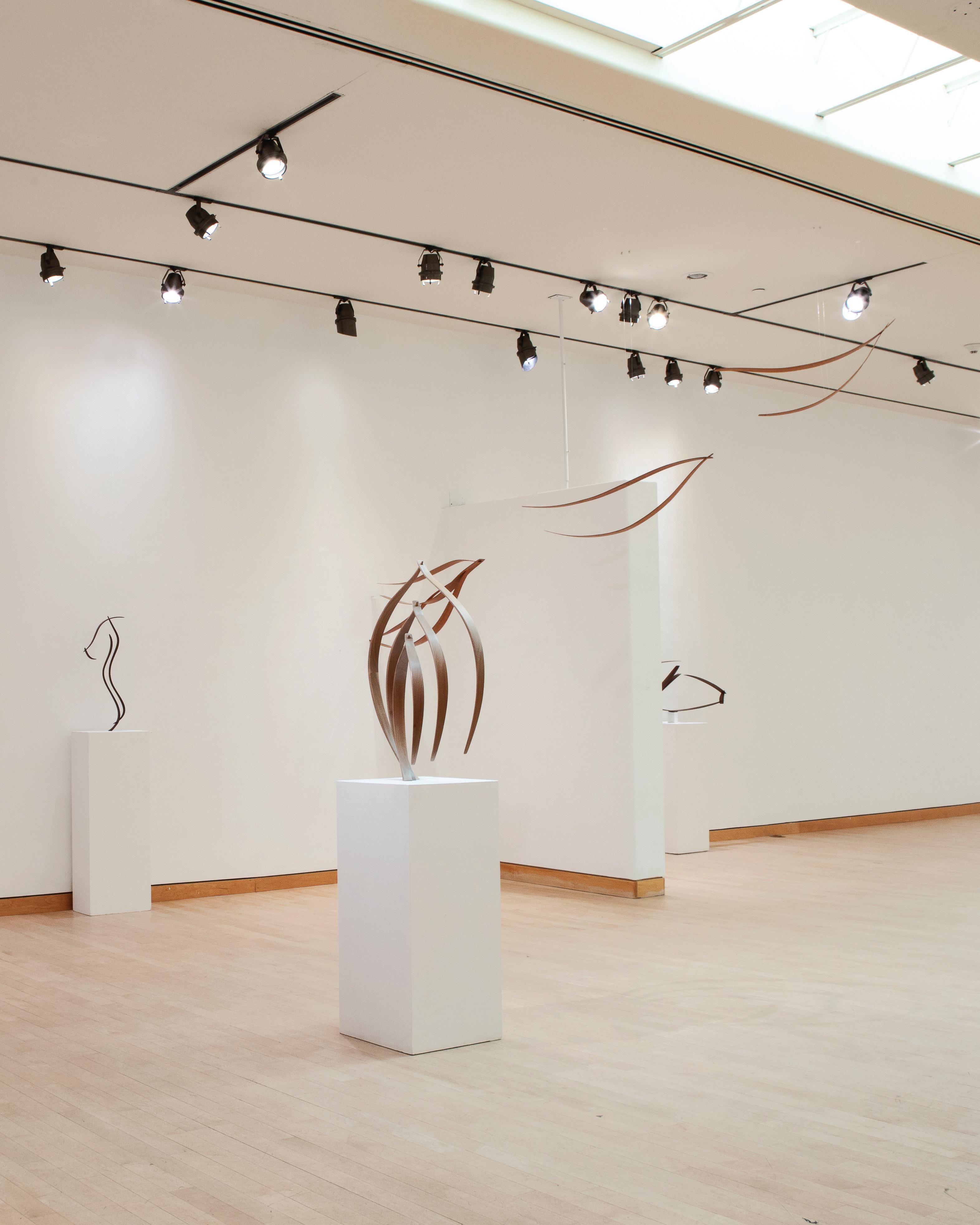
Clift’s horizontal and vertical forms resemble elements in the natural world – skeletal trees, dry grasses, or the profiles of hills. He spent his childhood in the desert near Santa Fe, New Mexico, a terrain that reduces nature’s life forms to rudimentary components, and one that continues to exert influence over his career. Although his inspiration derives from a tangible source – an object seen or emotion felt – the source is peripheral to a finished work. Even so, humans tend to anthropomorphize in order to establish kinship with the object of their attention. This instinctual urge is irrelevant to Clift’s sculptures, which embody a highly purified sense of beauty to reflect the essential aspects of outside realities. The aesthetic autonomy of his sculpture allows a piece to command the space on its own terms, initiating a direct alliance with the viewer. Additionally, his titles are factual rather than descriptive, such as Two Resting Forms and Four Pieces Waving, which serves to reinforce their autonomy.
The concept of forms seeking a state of equilibrium is rooted in Clift’s childhood. He has recalled building narrow towers with a set of wooden blocks, increasing their height until the structures finally toppled. The act of assembly and disassembly, so intrinsic to any child, is a way of exploring the world and testing the bounds of possibility. For Clift, these formative exploits were an introduction to making sculpture, and he has not stalled since. He still places considerable value on the notion of play and intuition, and knows if a sculpture will balance at the sketch stage. As he gravitates towards sitespecific practice, the tactile creation of a work remains paramount. He does not use foundries, employ staff, or utilize software, believing, instead, that tactility informs and sustains intuition.
An inherent fluidity at the heart of Clift’s sculptures aligns him with Alexander Calder’s cantilevered constructions, and Richard Serra’s elliptical forms. However, unlike Calder, Clift’s work is not kinetic. Its sense of motion derives from the visual flow of a work’s constituent parts, rather than any actual movement. Similarly, Serra’s ‘Torqued Ellipses’ only appear to shift on circumnavigation, but the viewer’s experience of the sculpture is still integral to its meaning. Yet, while Serra’s forms are colossal in size and weight, Clift uses subtle, delicate configurations to achieve a similar effect. In his work, the symbiosis between elements can surprise, startle, or pose a challenge.
Clift’s interest lies not in the interpretation of social and political issues, so prevalent in much contemporary art, but in the sculpture’s presence as a tangible structural entity and the viewer’s emotional, intellectual and physical responses to it. He uses equilibrium as a gateway to highly relevant themes in human psychology, nature, and other complex systems. Clift explains that he has always been interested in “multi-directional, hidden webs of cause and effect, from the complexity of our own minds and our relationships with others, to how biological systems can include unexpected feedback loops and connections that give them strength.” In this way, his practice aligns with the forward-looking, human-centric principles of post-contemporary philosophy, which prioritizes the transformative power of the universal experience.
Ina Cole is a writer and contributing editor at Sculpture magazine, and author of ‘From the Sculptor’s Studio: Conversations with Twenty Seminal Artists’.
CONVERGENCE (MAQUETTE)
2024
carbon fiber composite, paint
95 x 88 x 22 inches
Convergence began as a maquette for a 24-foot tall by 21-foot wide sculpture commissioned by the City of Mesa, Arizona, for its new City Hall in 2024. City Hall, I argued, represents a place where the public and the government come together and interact; this sculpture, now in the building’s double-height lobby, became a physical embodiment of that idea. More broadly, Convergence is about a ‘reaching towards each other’ by two disparate entities, be they people, groups, ideas, etc.

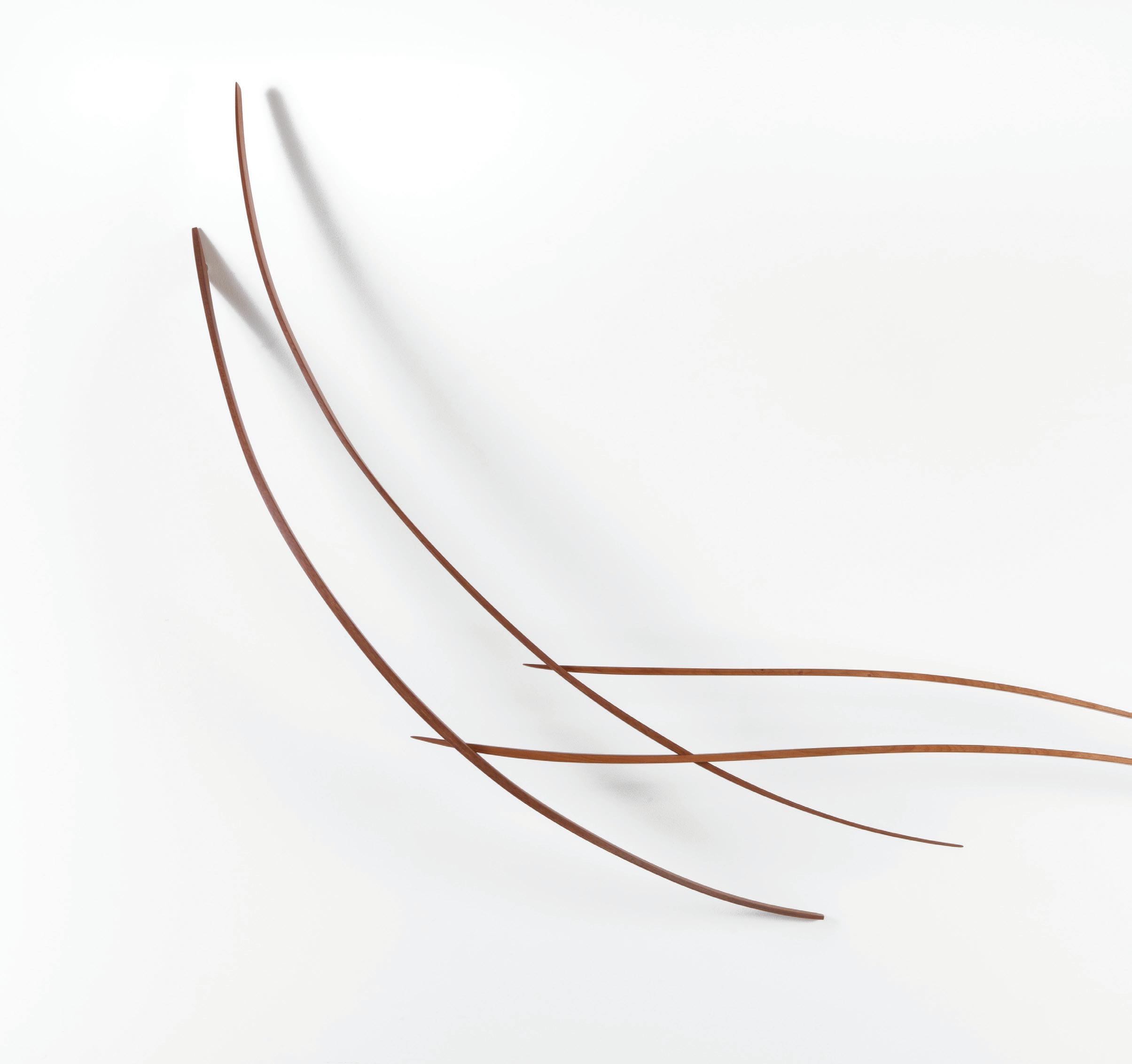
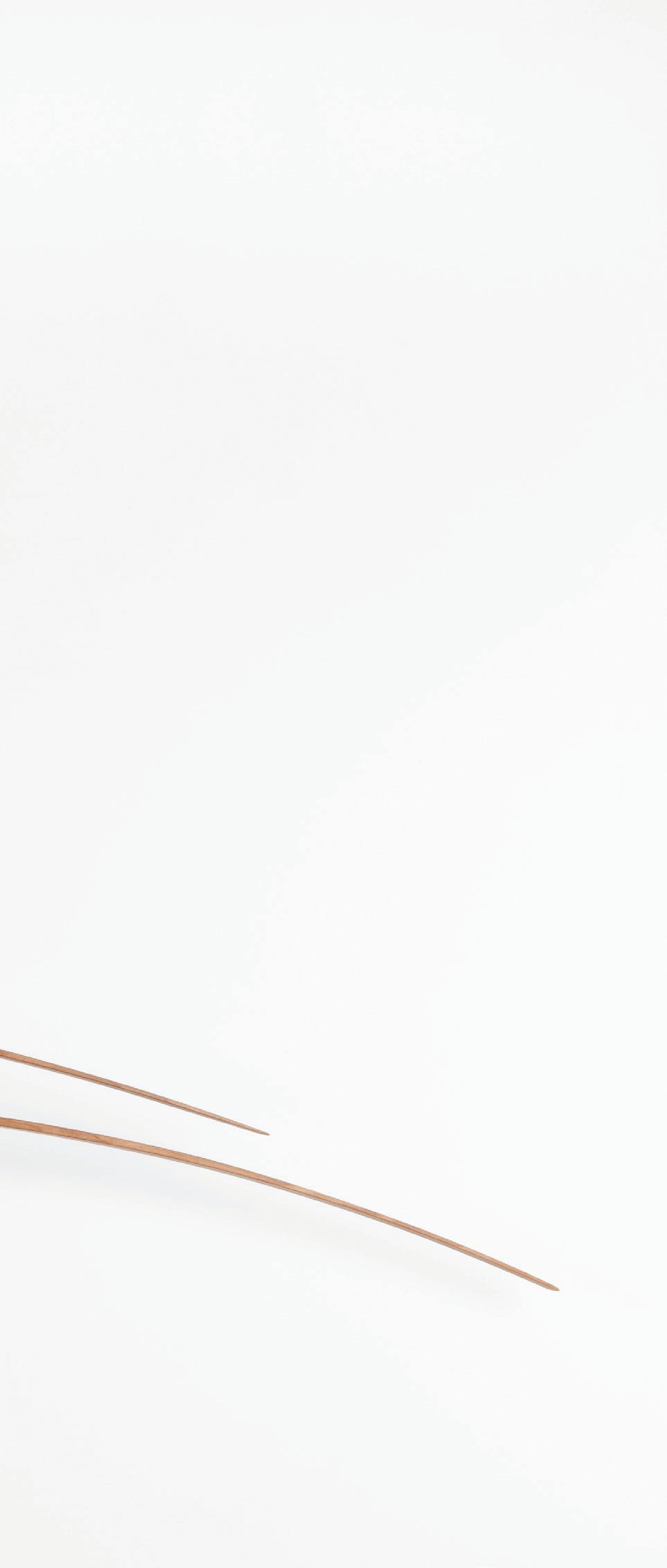
FAULT LINES: IN AND UNDER (version 2)
41
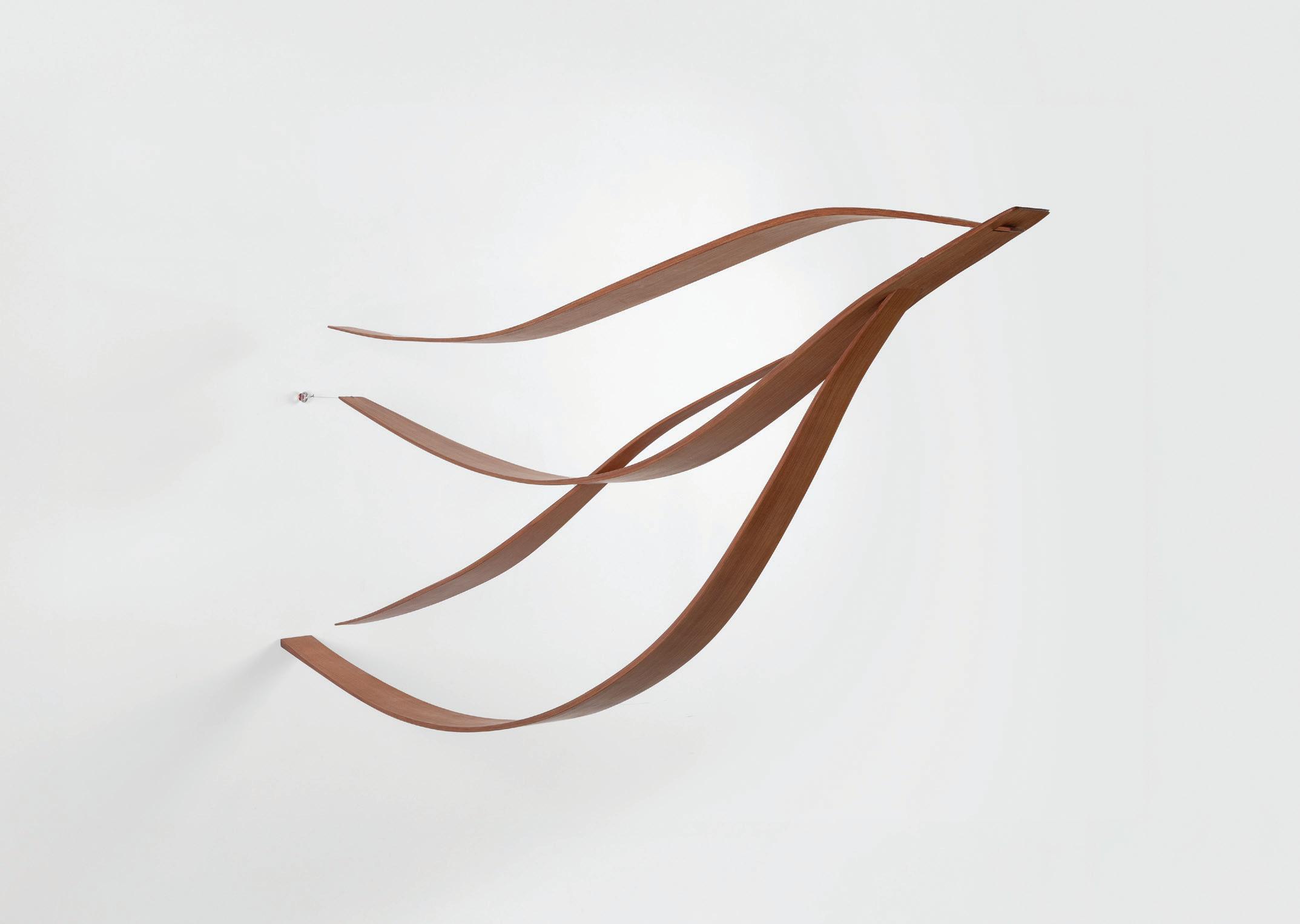
EMANATING OUT, PART 1
wall-mounted form, 2025
23 x 51 x 3.5 inches

OUT, PARTS 1 and 2

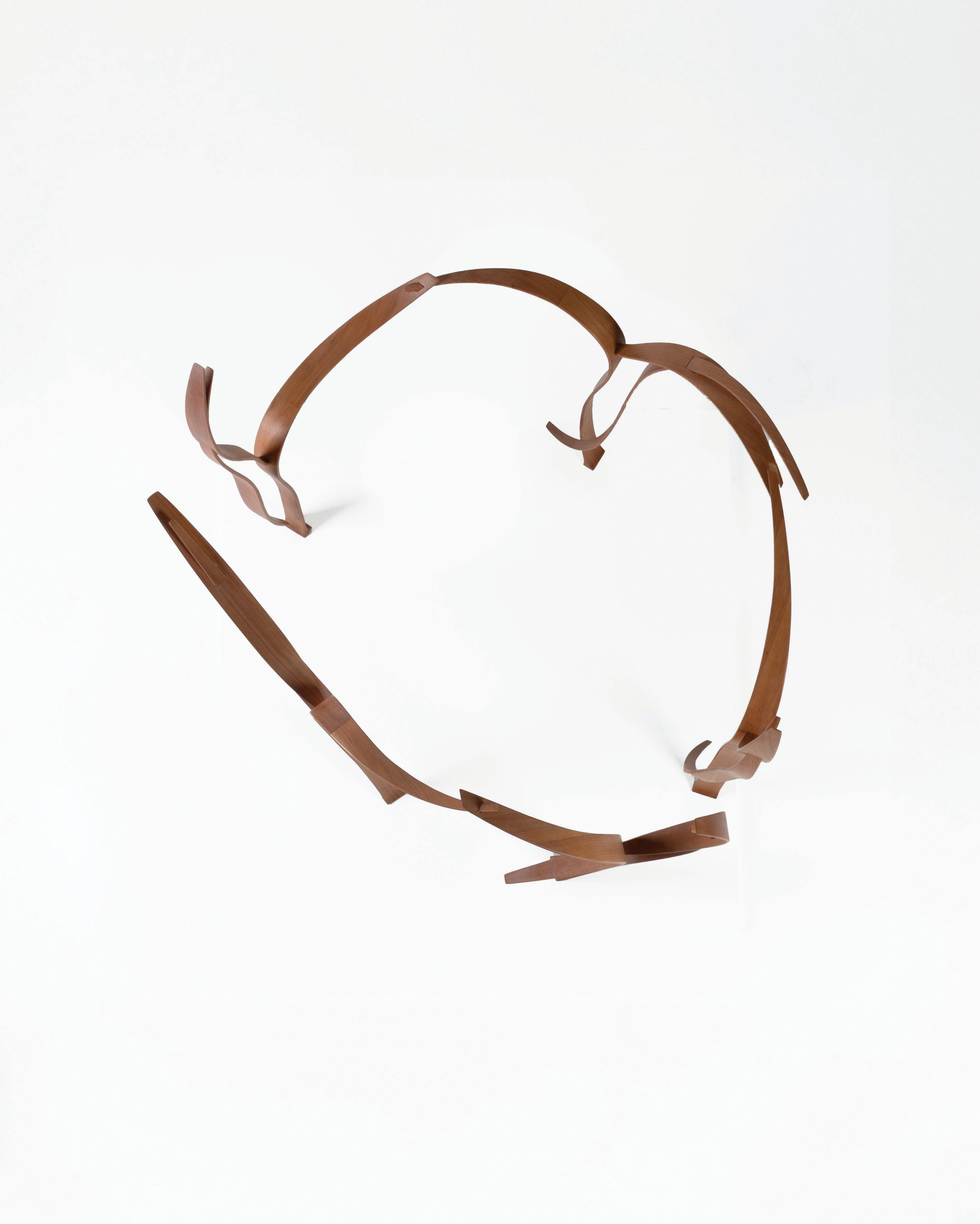
TWO RESTING FORMS, VERTICAL
2025 mahogany wood
45 x 25 x 3 inches

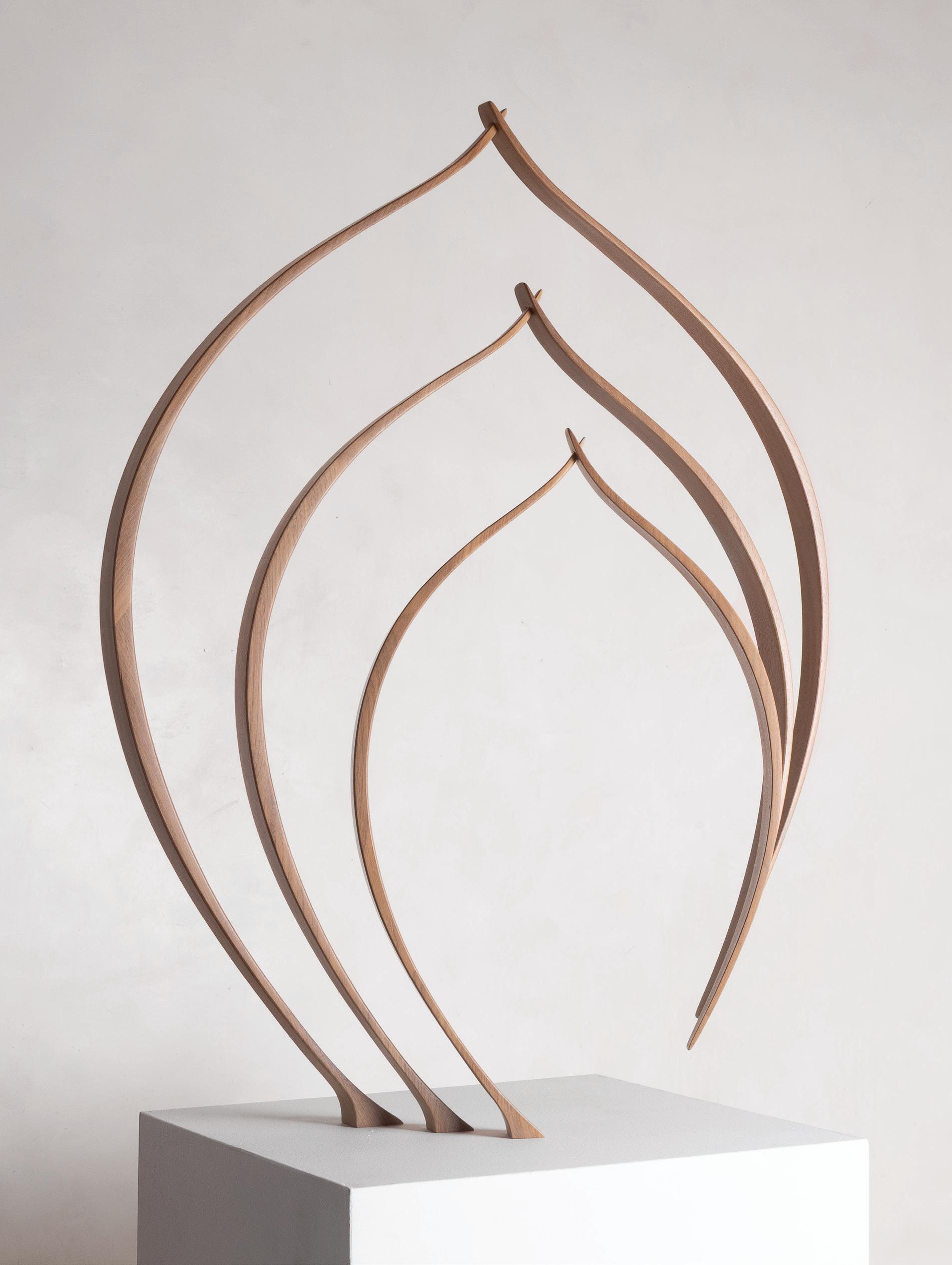
NESTED
2022
42 x 33 x 10 inches

THREE
2025
PIECES REACHING / THE TENSIONS WITHIN
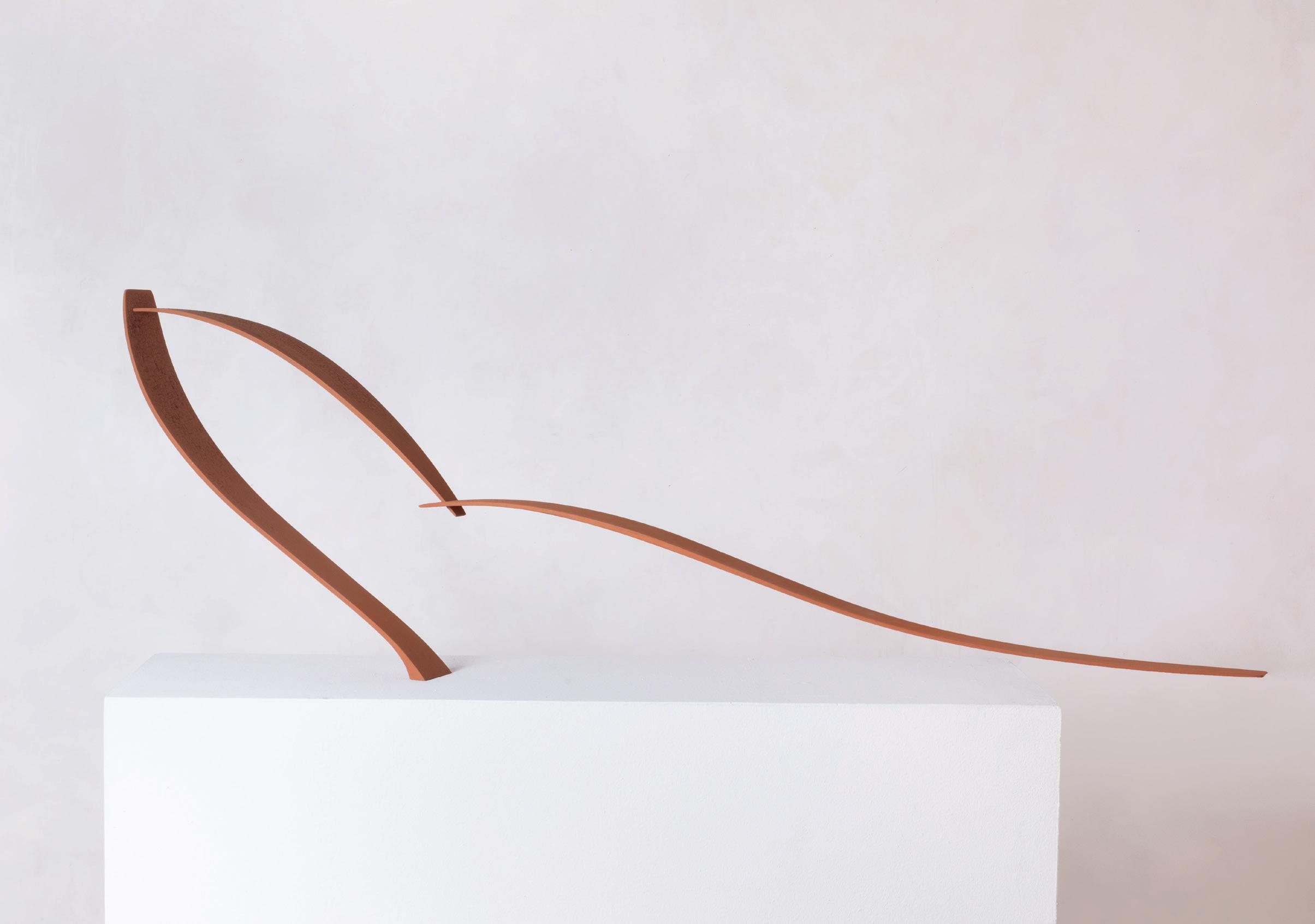
I’ve long been interested in using sculpture to reveal something hidden. Here, I applied a thin layer of slip (powdered clay, water, and a binder) to the separated wooden elements of a sculpture. As it dried I assembled the pieces into the cantilevered whole, placing each element under stress, tension, and compression. These forces are deep inside the fibers of the wood, internalized. But the dried clay cracks in response, externalizing these forces, revealing them on the surface.

FOUR PIECES WAVING
103 x 30 x 4 inches

ENCLOSING FORM, FOLLOWING THROUGH (version 2)
2022 wood, carbon fiber composite, paint approx. 32 x 30 x 6 inches
FOUR WITH TWO FOLLOWING EACH OTHER
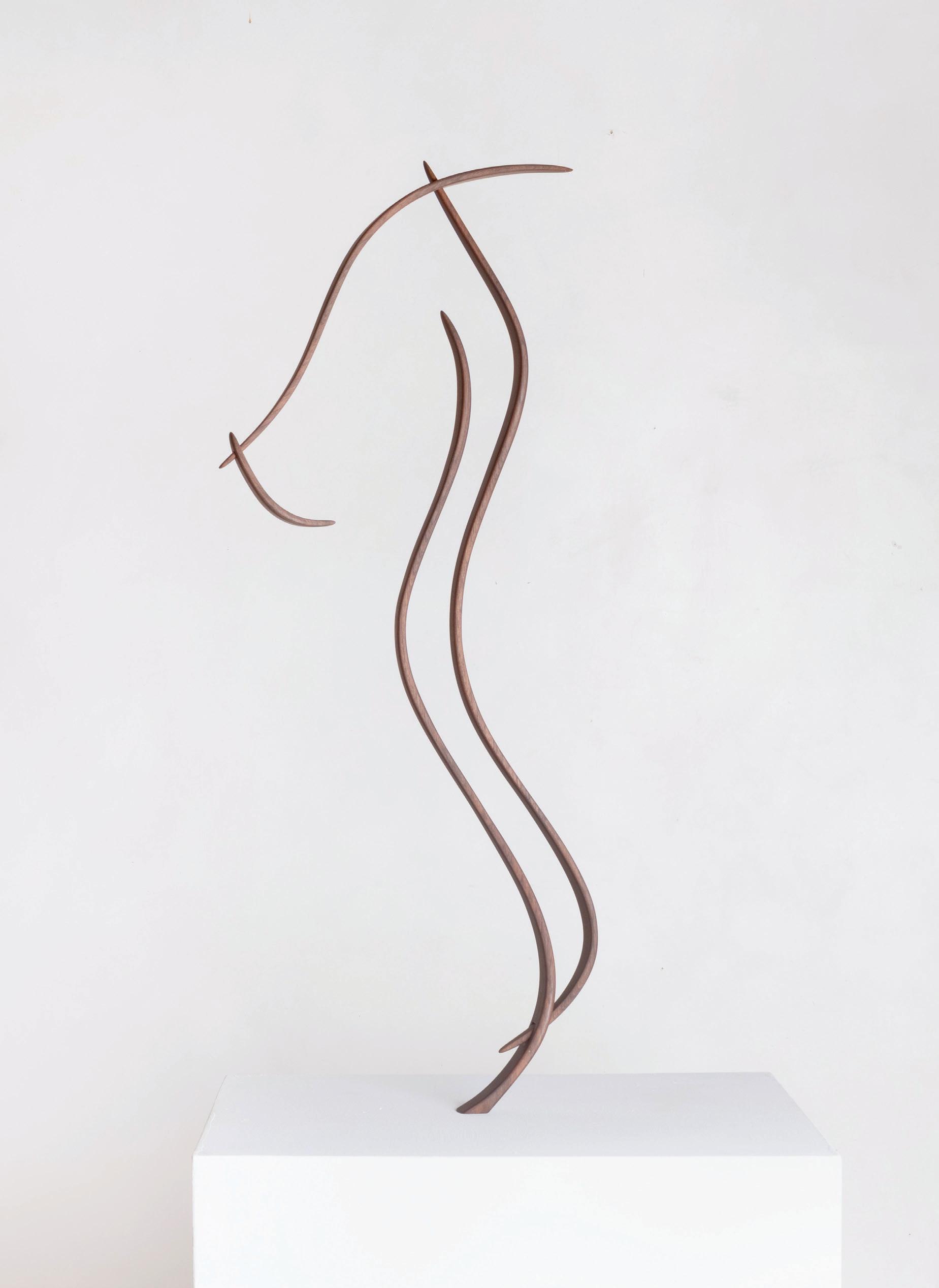

FORMS ON A CATENARY CURVE (version 3)
2025

A catenary curve is the form a cable takes under its own weight. It’s level (parallel to the ground) in just one spot, and becomes increasingly angled in either direction from there. Here five sets of the same three parts are arranged on a catenary. From the form in the center, one angle changes as it takes its place elsewhere on the curve in either direction, allowing it to adapt to the changed circumstances and attain equilibrium, rather than topple.


EXPANDING UP AND OUT
2025 sapele wood 14 x 63 x 3 inches
REACHING OVER AND UNDER
31 x 34 x 5 inches
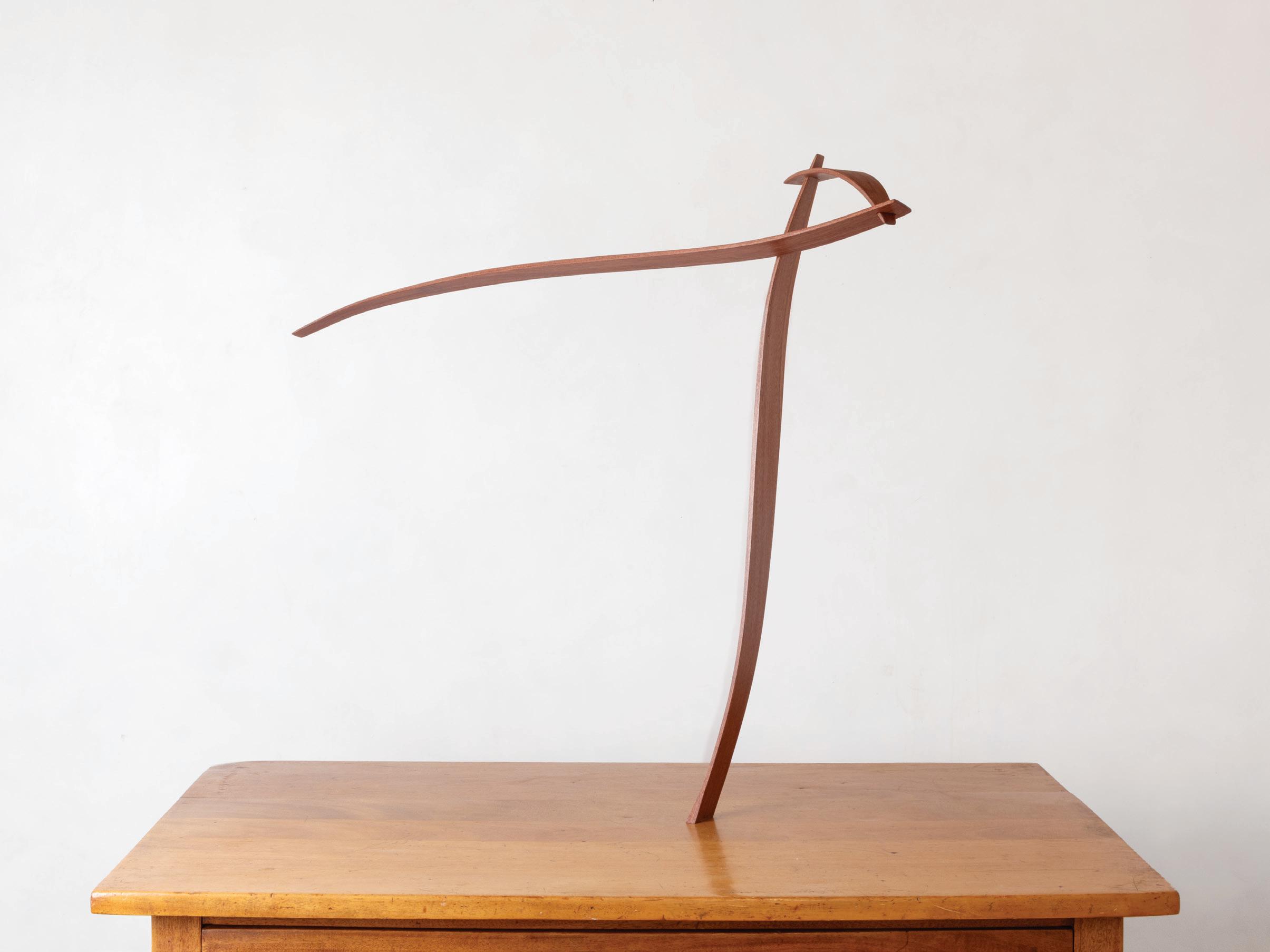

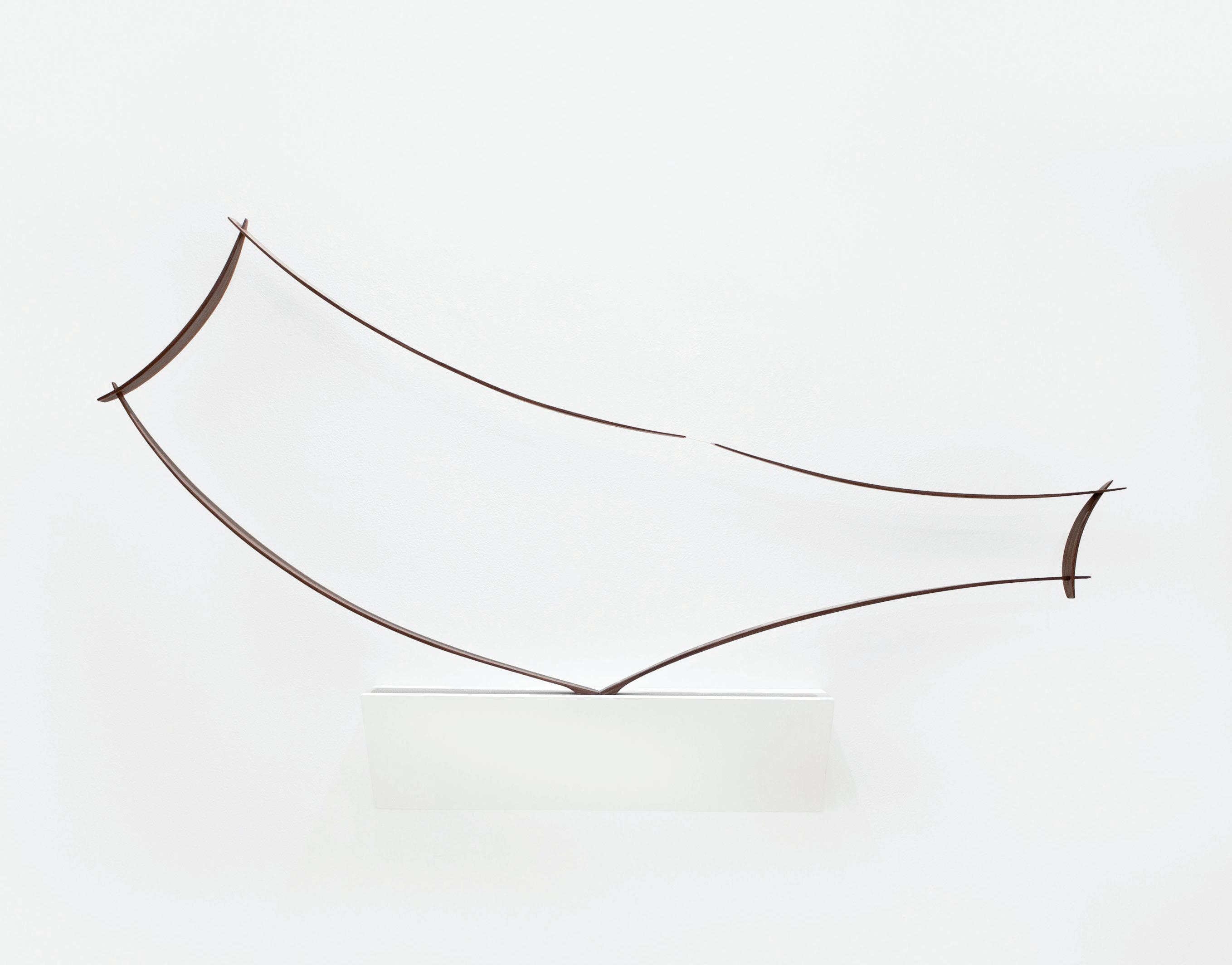
LEANING AWAY, HOLDING ON 2025
BLACK WALNUT WOOD, THREAD
33 X 69 X 4 INCHES

ONE ANOTHER


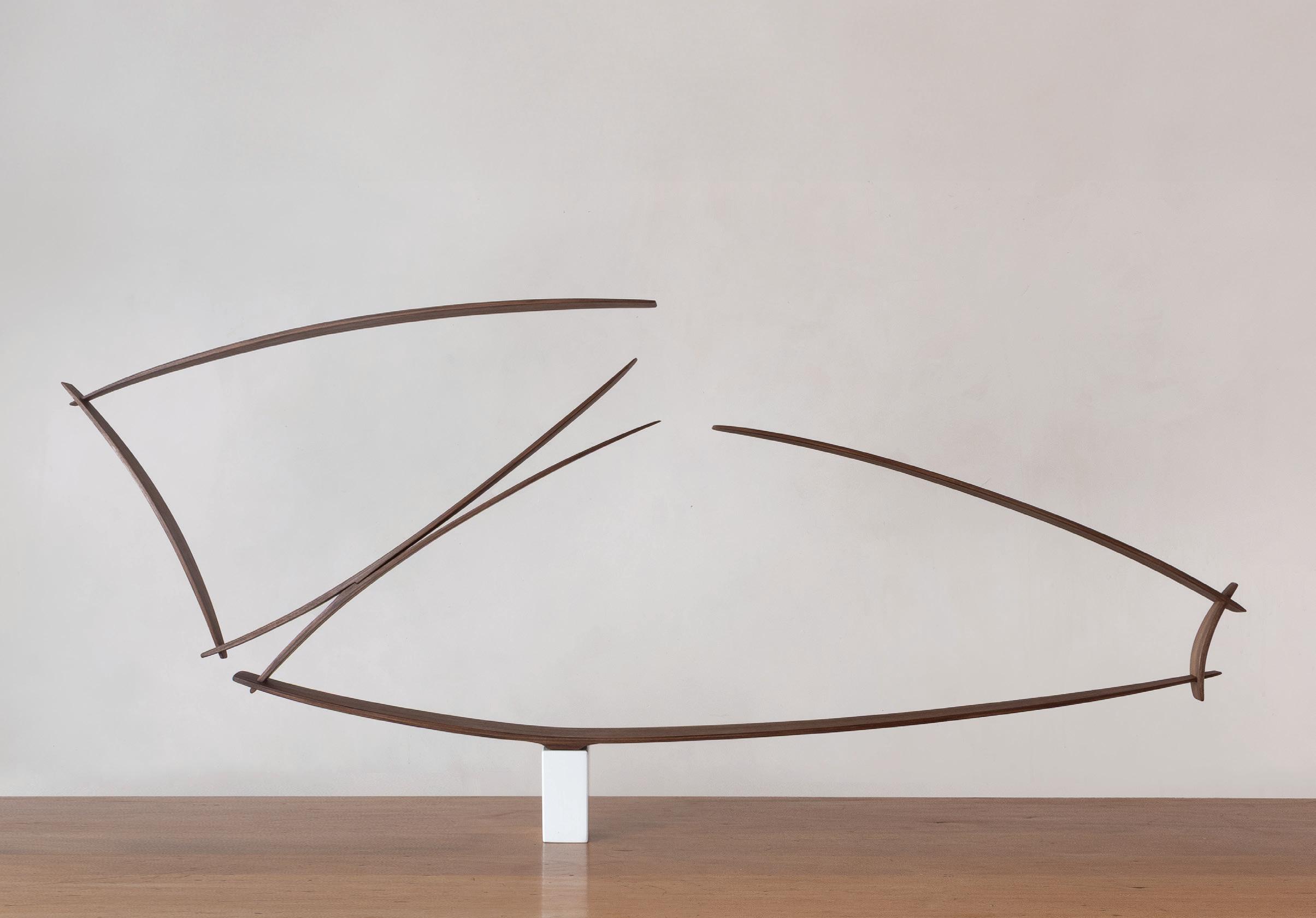
TWO RESTING FORMS, HORIZONTAL
2025 black walnut wood
17 1/2 x 47 x 3 inches
CIRCULAR FORM IN TEN PIECES
2020 wood, carbon fiber composite, paint
33 x 31 x 2 inches
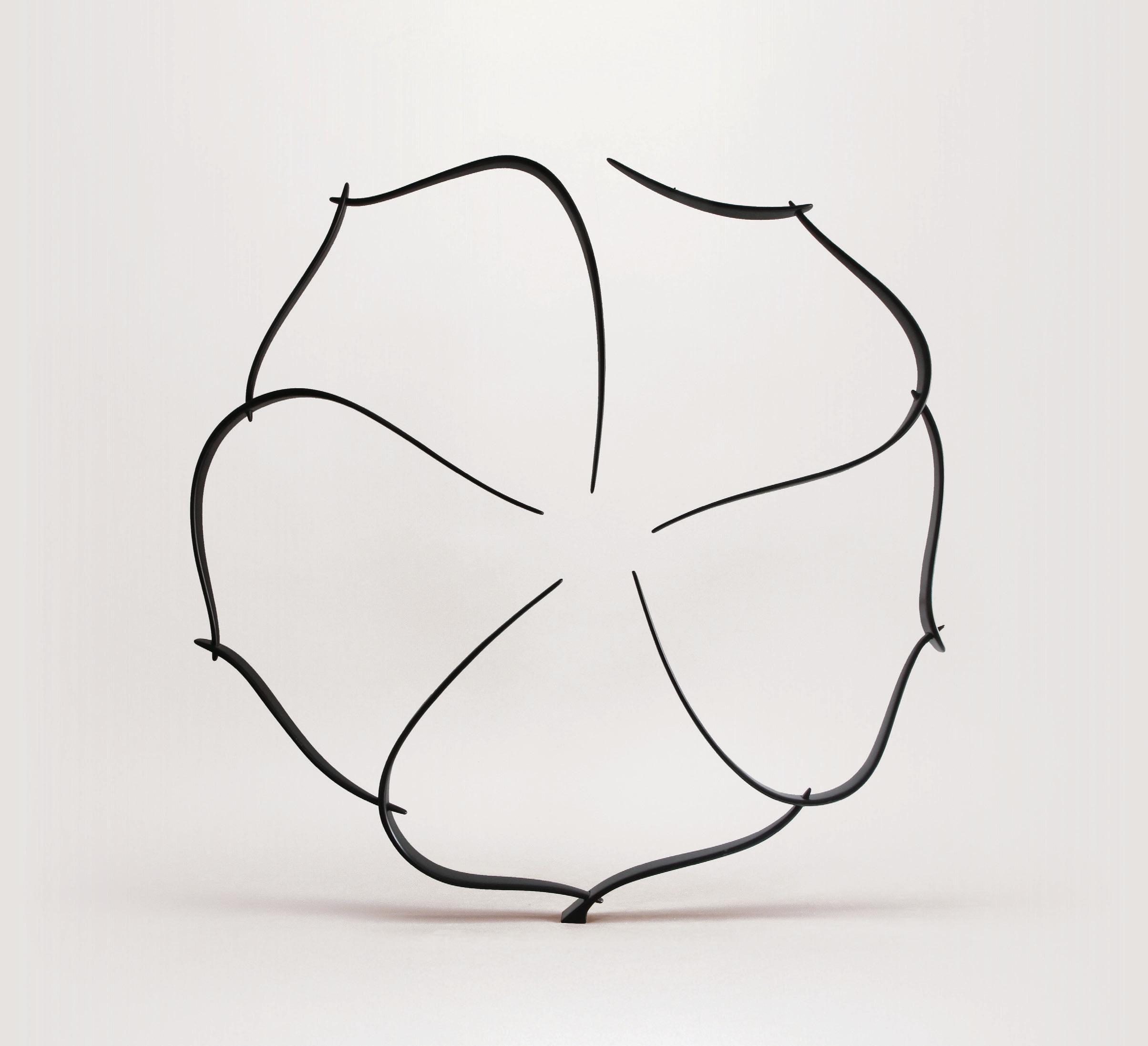


TWO FORMS IN COUNTERBALANCE
2025 carbon fiber composite, steel, paint approx. 102 x 136 x 18 inches
TWO ROUND FORMS, STACKED
carbon fiber composite, steel, paint
94 x 48 x 5 inches

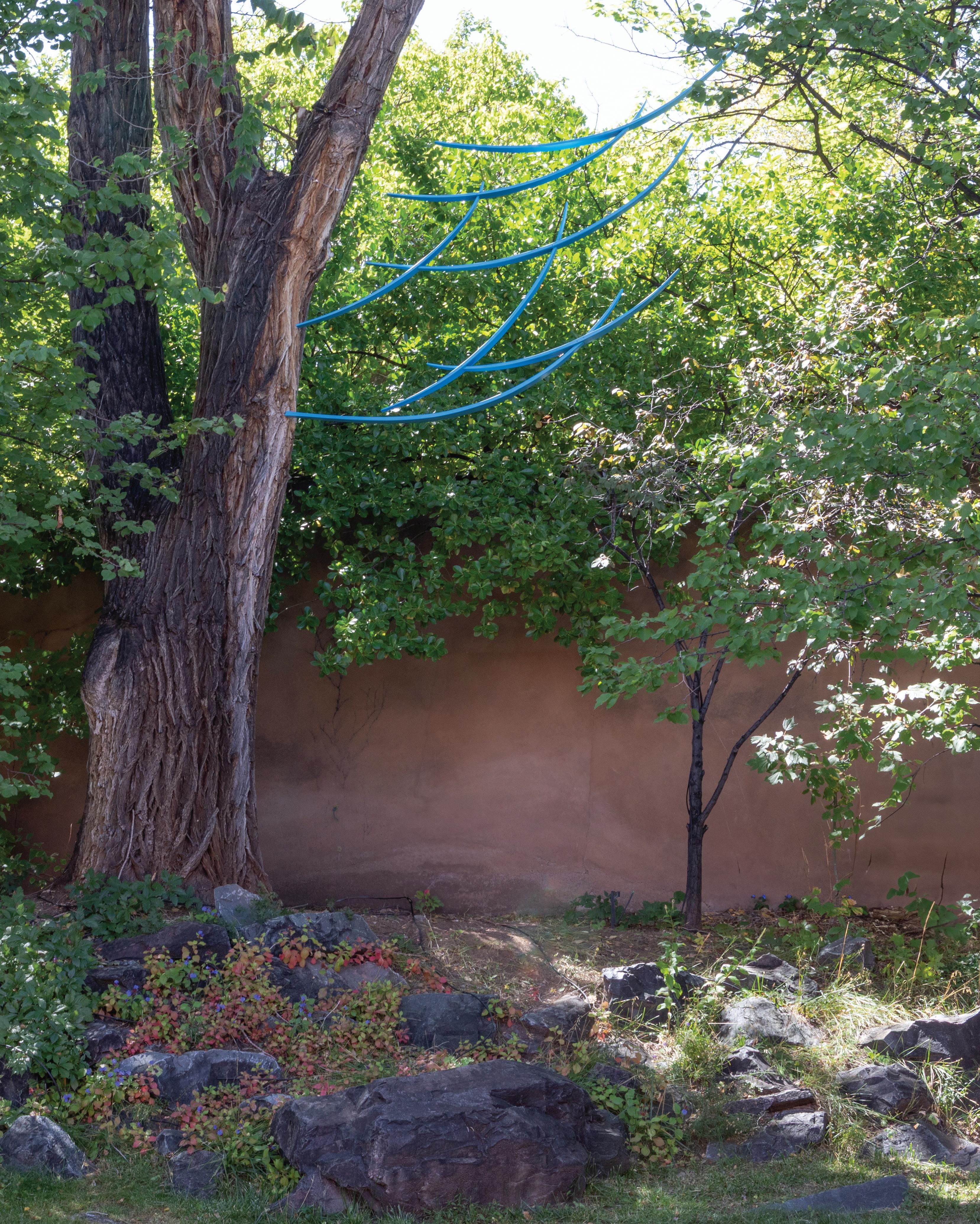
MURMURATION
2023
carbon fiber composite, steel approx. 67 x 87 x 4 inches
AT THE EDGE OF TOGETHER
2023
carbon fiber composite 54 x 74 x 3 inches
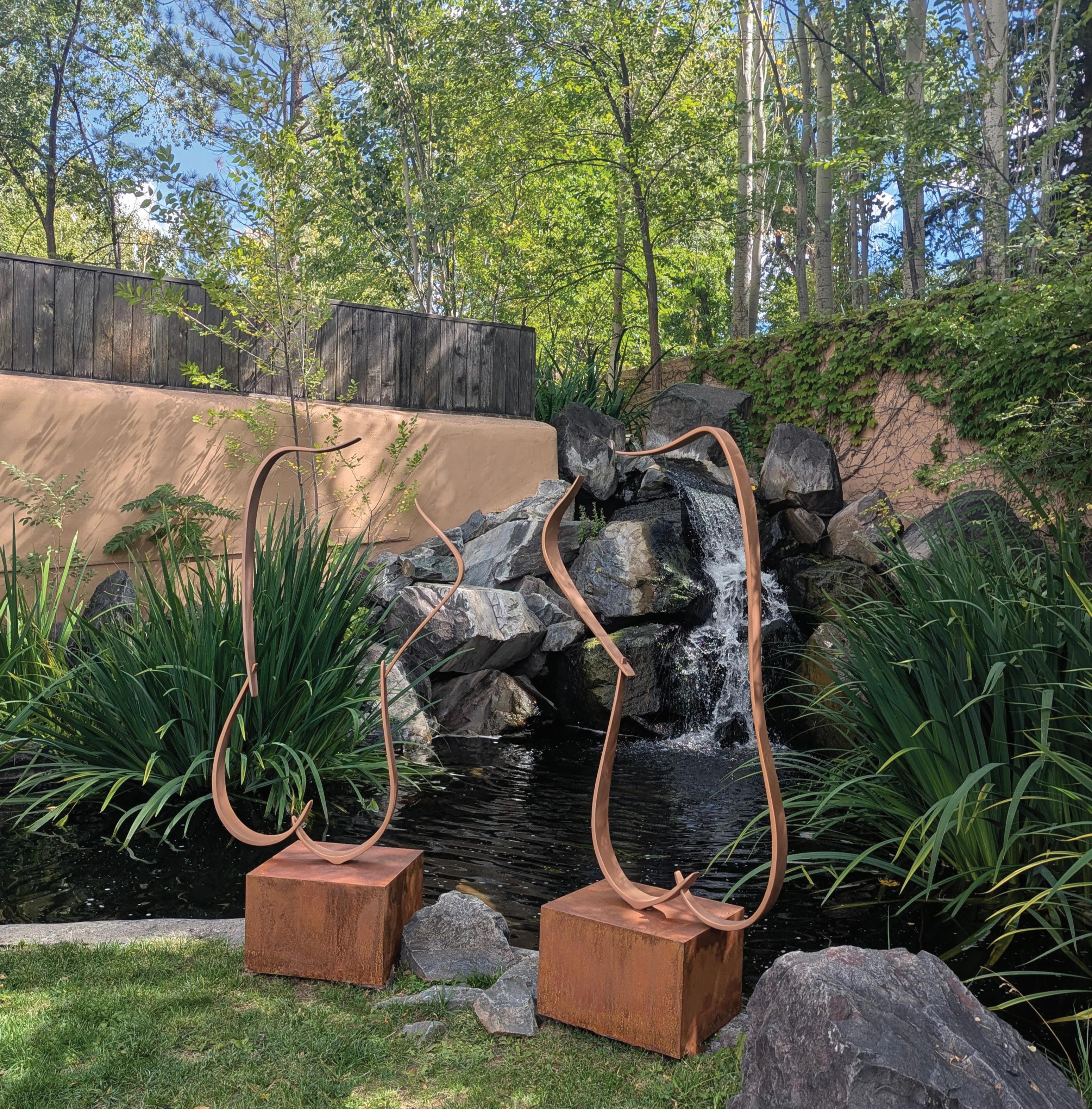
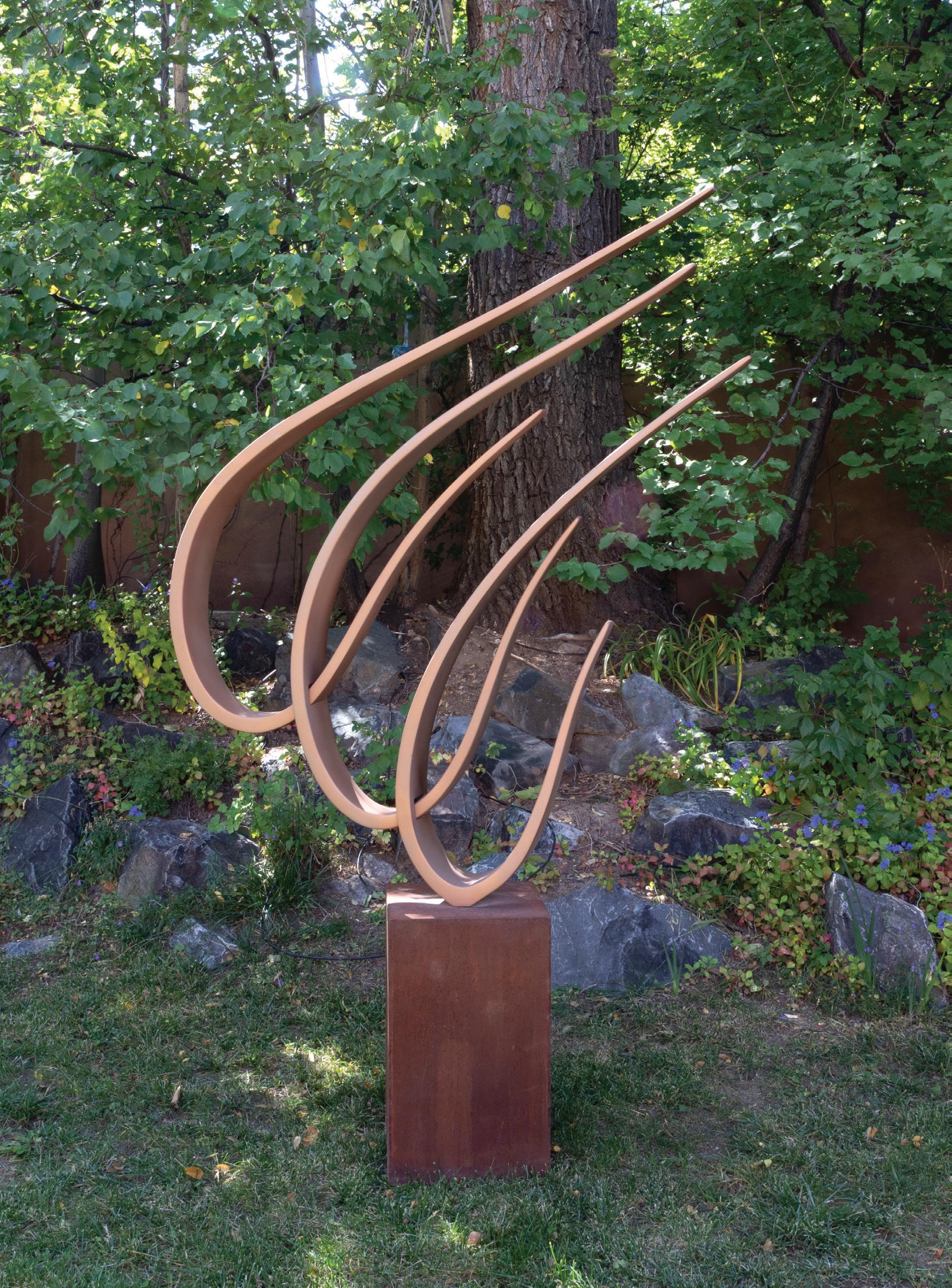
THREE PIECES REACHING BACK OVER EACH OTHER
2022
carbon fiber composite, steel, paint
48 x 49 x 5 inches
© 2025 Gerald Peters Contemporary. All rights reserved. No part of this publication may be reproduced or transmitted in any form or by any means, electronic, including photocopying, recording or information storage or retrieval system, without permission in writing from the publisher.
Paseo de Peralta, Santa Fe, NM 87501 @geraldpeters contemporary gpgallery.com

GERALD PETERS CONTEMPORARY
